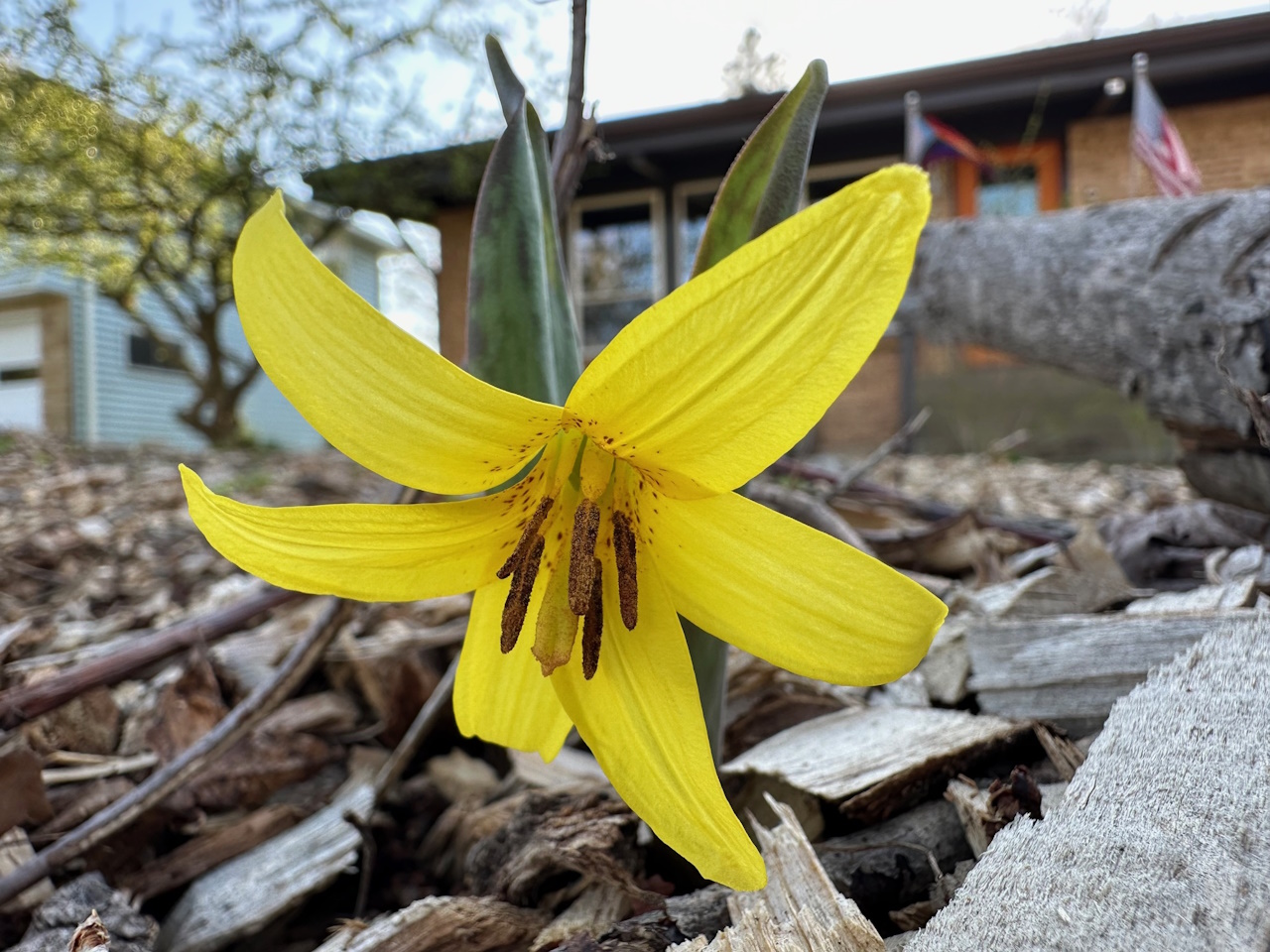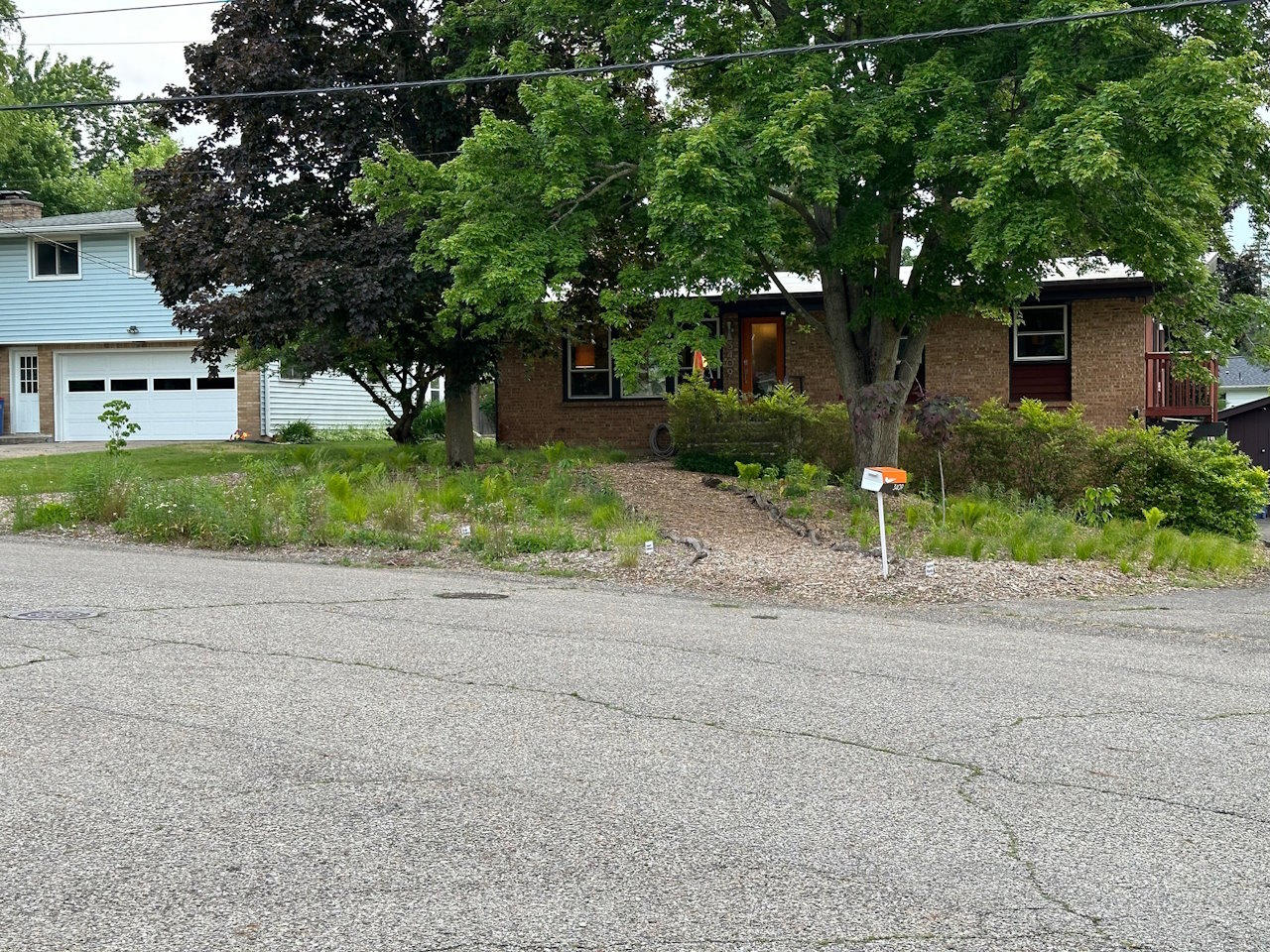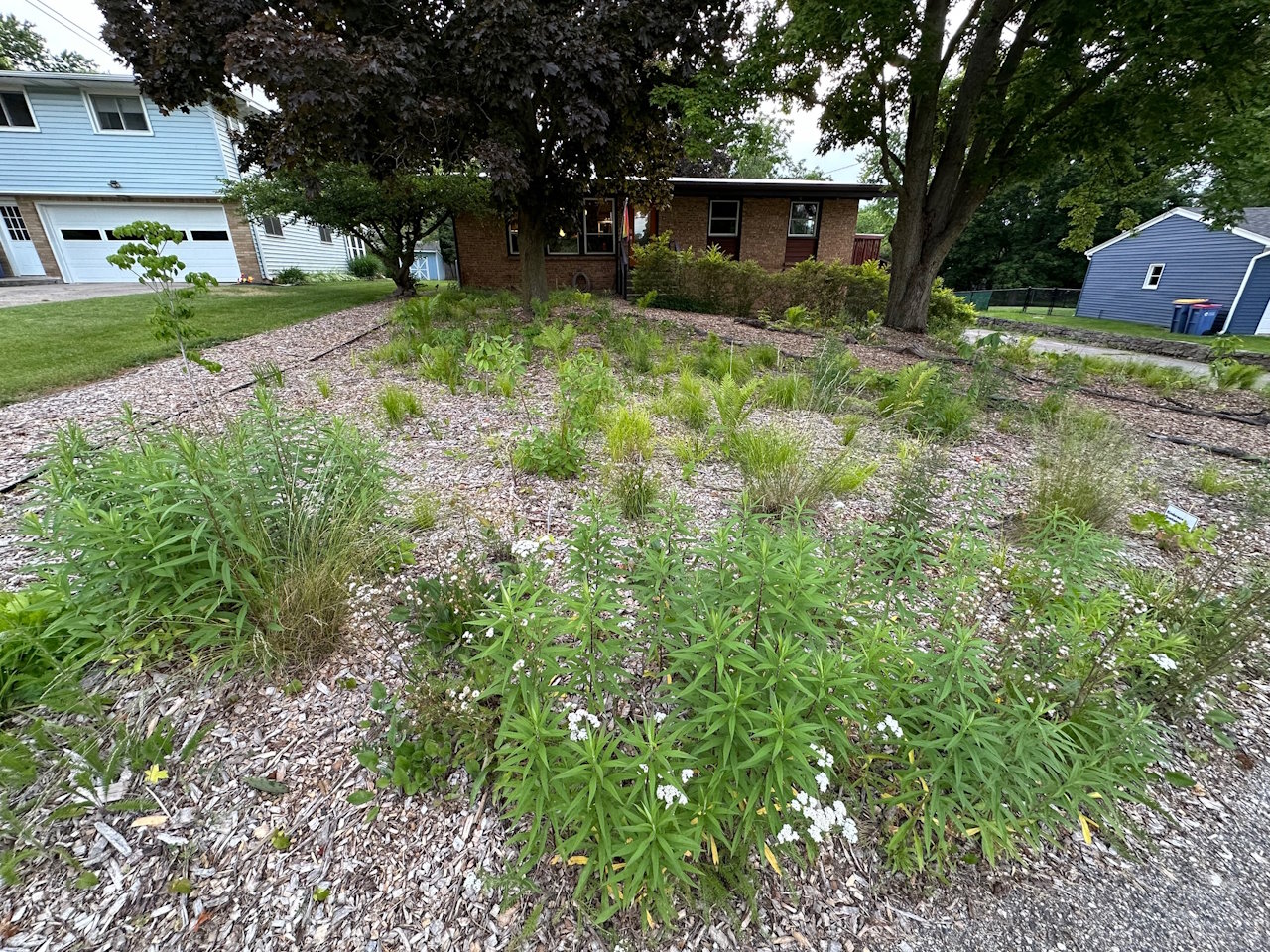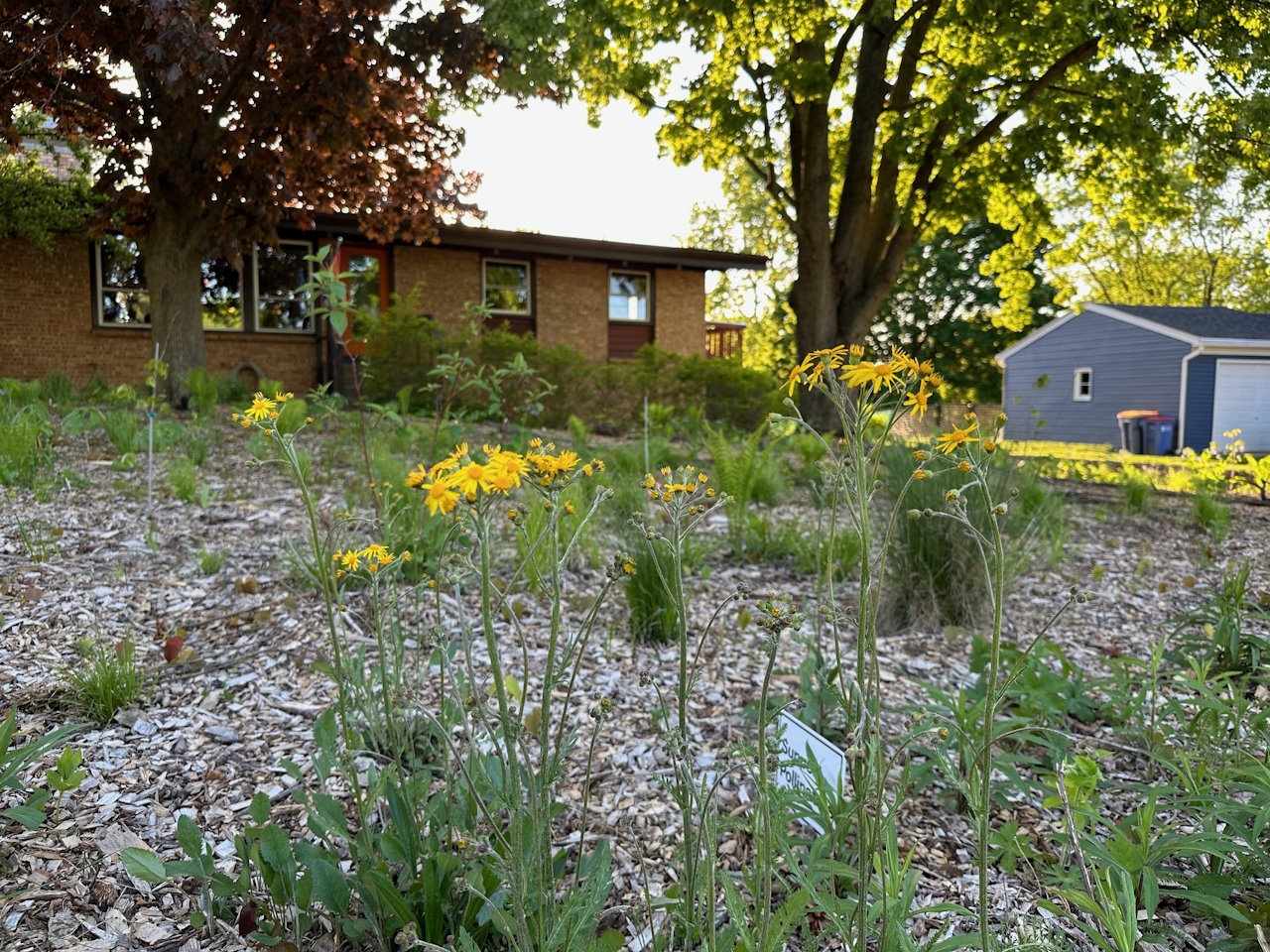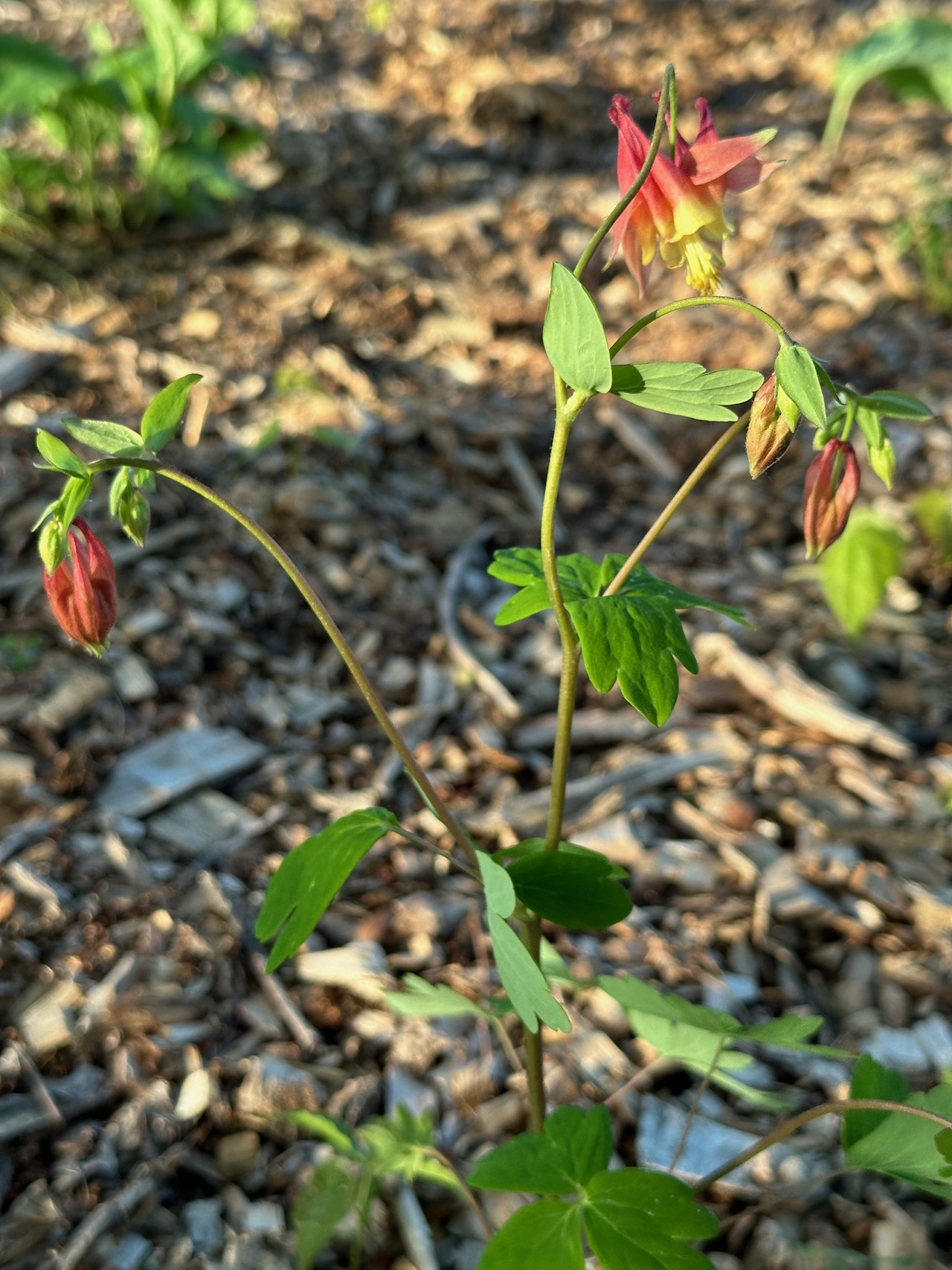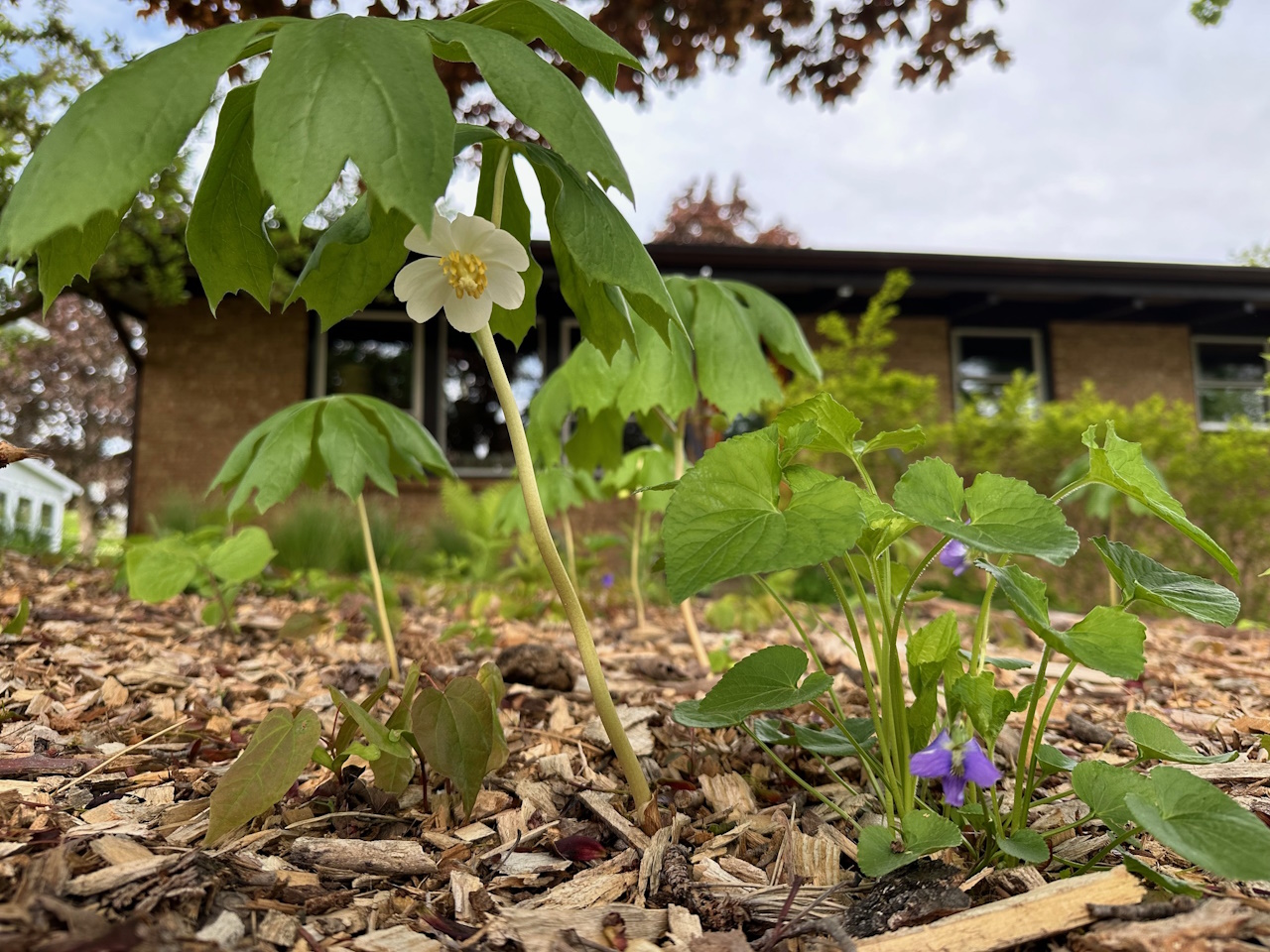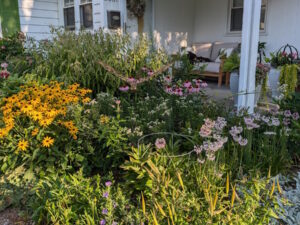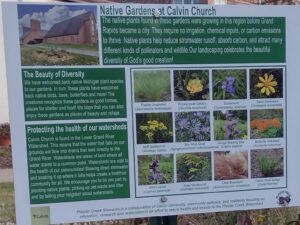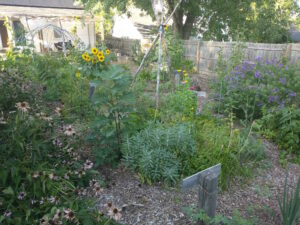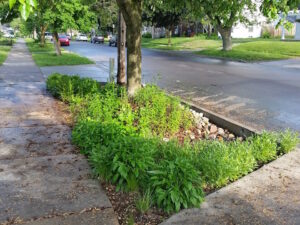While the dream of owning a house nestled in the woods was the ultimate goal for this homeowner, the proximity of a city park was deemed a worthy compromise upon purchasing their first home. Just a short stroll from their doorstep lay the inspiration for what would soon become their very own native woodland shade ‘yarden.’
Much like the rest of the property, the 3,000 sq. ft front yard had endured years of neglect. Mowing brought forth relentless dust storms, a consequence of futile attempts to tame a chaotic mix of invasive weeds and barren soil. Faced with this challenge, the homeowner began research, seeking DIY alternatives to traditional turf lawns that required minimal maintenance. Equipped with a smart phone, they leveraged AI to identify plants found during their regular excursions through the park, initiating a rapid learning journey that began in 2020. Realizing the most interesting plants were predominantly native species, they began building a database of their favorites, kicking off a deep dive into the native plant ecosystem.
After conducting a series of successful small-scale experiments across the property to remove weeds, gauge site conditions, and scalability, this novice gardener embarked on a transformative journey. Harnessing the natural shade provided by existing maple trees, the focus shifted to cultivating an array of native woodland plants, the majority of which were planted in the autumn of 2022. These botanical treasures not only adorn the urban landscape with vibrant year-round blooms, but also yield a bounty of edible delights, while lush mounds of sedges and ferns add an enchanting allure to the scene. Step into this mini urban forest nestled amongst traditional turf lawns—a haven for pollinators and a testament to the beauty of harmonizing with nature.


